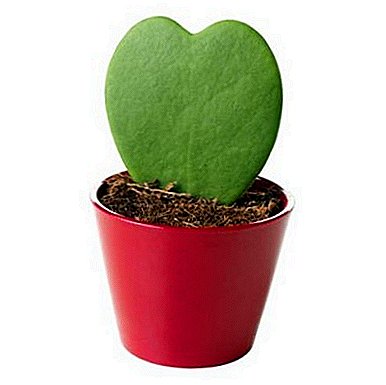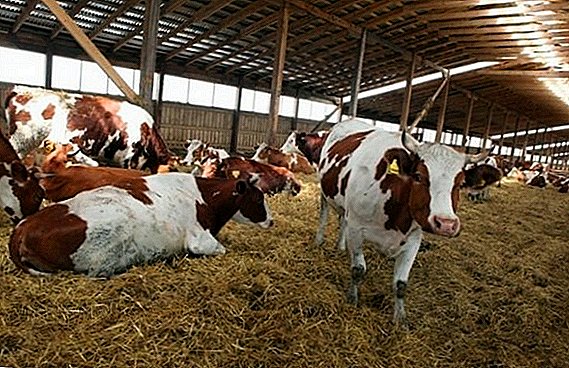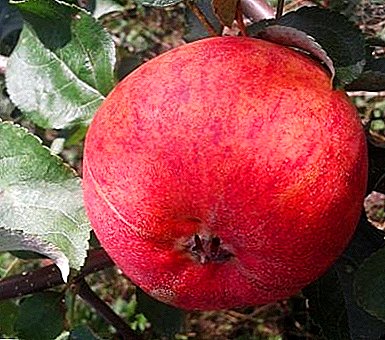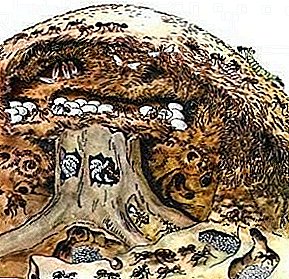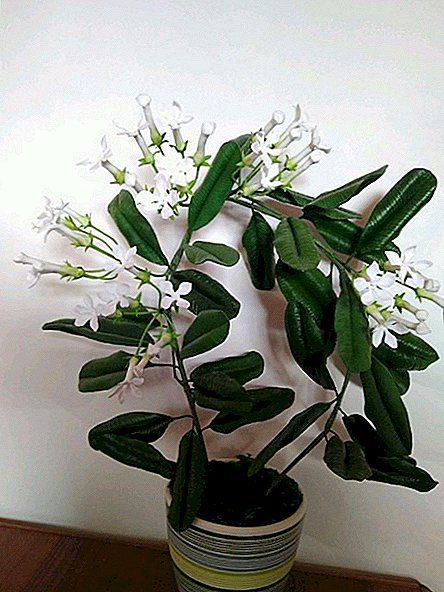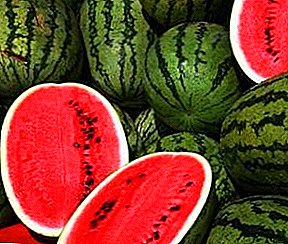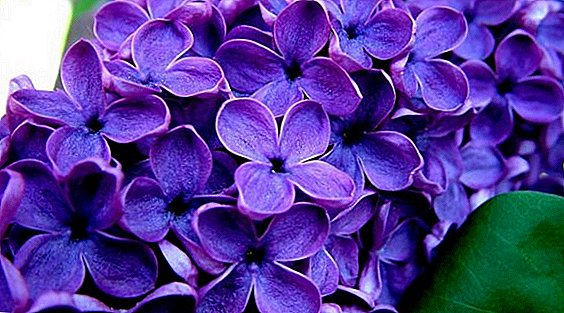 Growing poultry, the farmer usually gives preference to any direction of his production: meat or egg. Most often, the choice leans in favor of the last of the obvious advantages of the egg-breeding species to the meat ones. Today we will talk about the best representatives of these breeds, their distinctive characteristics.
Growing poultry, the farmer usually gives preference to any direction of his production: meat or egg. Most often, the choice leans in favor of the last of the obvious advantages of the egg-breeding species to the meat ones. Today we will talk about the best representatives of these breeds, their distinctive characteristics.
Short description
Selection criteria for a good layer:
- activity (she is always on the move);
- great appetite;
- early maturation.
Important! When breeding the direction of egg chickens, it should be noted that they do not have a pronounced hen instinct.

Read the description of the most unusual, meat, meat-egg, ornamental and fighting breeds of chickens.
Productive birds differ in appearance:
- in good layers, during the period of productivity, the comb and earrings turn pale, the skin on the legs and beak, since a lot of pigment is spent on the formation of eggs and the color of the shell;
- a large distance between the bones of the pelvis, forming the bottom of the womb (about 6 cm);
- a large and soft belly, the distance between the thin bones of the womb and the chest are at least 7 cm;
- The skeleton of birds is light, small in size, the mass is often not more than 2.5 kg.
Did you know? In the imperial gardens and palace parks of medieval Japan, phoenix chickens strolled freely, killing them was punishable by law. A distinctive feature of birds is a long tail about three meters.

Benefits
Advantages of hens egg direction over other breeds in the following factors:
- the number of eggs and their weight;
- shell hardness;
- strong immunity;
- high survival rate;
- peaceful nature;
- low nutritional costs.
Which layer to choose
Among the large list of laying hens, a number of breeds stand out, which we will examine in detail.
High line
Scientists at the US High-Line International Science Center have developed an unpretentious, high-yield breed of chickens, which they named after the center. Appearance is compact, light bones, tightly plumped to the body plumage in white or brown.  A small neat head, with a pink comb and earrings, a short curved beak. The neck is a long, wide breast, a straight, short back and a raised tail. Paws with pale yellow skin. The productivity characteristics of both white and brown individuals are unchanged.
A small neat head, with a pink comb and earrings, a short curved beak. The neck is a long, wide breast, a straight, short back and a raised tail. Paws with pale yellow skin. The productivity characteristics of both white and brown individuals are unchanged.
Learn more about High Line Chickens.
The maximum weight of a bird is 2 kg 300 g; it starts at six months old. For the year, it provides 340 eggs, their shells are strong, the average weight is up to 65 g. The high-line is good for mass breeding, the cost of its maintenance and nutrition are small.
Shaver
The shaver is from Holland, employees of the Hendrix Genetics Company were engaged in breeding it. The breed is a hybrid and has three varieties that have the same "production" characteristics, but differ in the color of their plumage: white, red, and black.  It also combines the breed and the fact that the down in all individuals is white, regardless of the shade of feathers. These are small individuals, with a soft bend of the back and a small tail. Wings and feather cover tightly against the body. A distinctive feature in appearance is a short comb and earrings. The skin of the paws is at first bright yellow, becoming bluish-gray as it gets older.
It also combines the breed and the fact that the down in all individuals is white, regardless of the shade of feathers. These are small individuals, with a soft bend of the back and a small tail. Wings and feather cover tightly against the body. A distinctive feature in appearance is a short comb and earrings. The skin of the paws is at first bright yellow, becoming bluish-gray as it gets older.
The weight of an adult chicken is not more than 2 kg. Puberty occurs at 4 months, in the year the chicken carries up to 250 eggs, the first weighing up to 45 g, then up to 60 g. The direction of the breed is dual: egg-meat.
You will probably be interested to learn more about the breeds of chickens "Hisex" and "Shaver".
Hisex
Another work of the Dutch breeders - breed Hisex, which is a hybrid of leggorn hens. There are two varieties: white and brown. White highsex with white plumage, medium size. The back is short, straight, fluffy tail. 
Breast wide, long neck, small head and short paws of yellow color. The brown variety is slightly larger, the color of feathers is brown, the tips of the feather are white. A distinctive feature of both individuals is a luxurious crest, coquettishly falling to the side, and soft, like silk, feather.
The weight of the white individual - 1.8 kg, brown - 2.6 kg. Egg production per year for white highsex is 300 eggs (60 g), for brown eggs - 350 eggs (70 g). Scramble Hisex begins at the age of five months. The bird has a balanced, flexible, unpretentious, strong immunity.
Did you know? One Israeli ornithologist breeder incurred the wrath of the World Organization for the Protection of Animals. The fact is that a scientist, through long experiments and crossbreeding, brought a breed of chickens without feathers, motivating such research with the hot climate of Israel, in which the feather cover is unnecessary. It should be noted that these specimens do not enjoy popularity among breeders.Video: description of the breed of hens "Hisex"
Russian crested
There is no unequivocal opinion about the origin of this species, one of them is the national selection. The appearance of the chicken can be called decorative: a high fluffy crest on the head, a wavy type of comb.
It will be useful for you to read about how to make a chicken coop, an aviary, a cage, a nest and a roost for laying hens.
There are many variants of color and there is no single standard, white is more common, there are motley, glaucous, reddish, black. The breed has a wide and straight back, a wide powerful tail and short legs. The long neck smoothly flows into the rounded chest. Scarlet comb and catkins.
Laying weight on average 2.2 kg. Egg colors are creamy pink or beige. Per year brings up to 170 pieces, weighing 58 g each. The breed is considered meat and egg. 
Read more about such breeds of chickens as "Minorca" and "Russian Crested".
Minorca
The name of the breed is associated with the island of Minorca of one of the archipelagoes of the Balearic Islands near Spain, where this bird is common. Selection continued to engage British scientists.
A light and compact bird of the Spanish variety with a proud bearing, a strongly convex chest, a curved back line and a long tail. Its blue-black or brown-black plumage is firmly pressed to the body, the paws are long gray in color.
The British variety has a white plumage and a pink tinge of its paws. The powerful neck holds a small head with a red comb and large snow-white, round-shaped earrings.  Spaniard weight - 2.6 kg, British women - up to 3.5 kg; the productivity of both species is up to 200 eggs per year, the average weight is 80 g. They rush from the age of five months, and they do it at any time of the year, which distinguishes this breed from others.
Spaniard weight - 2.6 kg, British women - up to 3.5 kg; the productivity of both species is up to 200 eggs per year, the average weight is 80 g. They rush from the age of five months, and they do it at any time of the year, which distinguishes this breed from others.
Important! Minorca do not tolerate low temperatures, are stressed in the presence of noise, sharp sounds.
Leggorn
Leggorn is a breed of American breeding whose parents were Italian and Spanish chickens. The breed received its name in honor of the Italian port of Livorno, from where they brought the bird to the USA, pronounced in a manner convenient for Americans.
Learn how to choose and maintain laying hens, what are the pros and cons of keeping chickens in cages, do you need a rooster for the chickens to carry eggs, how to determine the age of the chicken, what to do if the chickens do not carry well and peck eggs.
In birds, the body in the form of a wedge, bulging, broad chest and a big belly. Beak and legs are gray-yellow. A small head is crowned with a leaf-like comb, bent to the side, red, earrings of the same tone. Plumage white or motley.  The weight of chickens is 1.7 kg, egg production is up to 300 pieces per year, white individuals carry eggs of white color, variegated ones are brown, weighing up to 60 g. They are prone to hysterics when noise occurs. The breed is one of the most numerous in the variety of color: they have over forty.
The weight of chickens is 1.7 kg, egg production is up to 300 pieces per year, white individuals carry eggs of white color, variegated ones are brown, weighing up to 60 g. They are prone to hysterics when noise occurs. The breed is one of the most numerous in the variety of color: they have over forty.
We recommend reading about the breeds of chickens "Loman Brown" and "Leggorn"
Lohman Brown
Breed of German selection, obtained by crossing first-line hybrids from four breeds. The color of the feathers is brown-fawn, the down can be white, just like the tips of the tail feathers and on the neck. Convex chest, straight back, soft belly and strong short legs.
The head is small, comb and earrings red. Chicken weight - up to 2 kg, carried from the age of five months, brings up to 320 eggs per year weighing 64 g each. The breed is considered the leader in meat and egg production. 
Tips
Productivity recommendations:
- Feed the birds high-quality, balanced food, always with vitamins and minerals. A good nutritional supplement is flax seeds.
- Observe the correct mode and amount of food: young individuals need more food than a bird after a year.
- You can not overfeed the bird (in winter the amount of food is more than in summer).
- Keep young and adult separate.
- Provide maximum light day - 17 hours.
- During the winter period, heat the room and watch the humidity; the hens like drier air.
- Keep the feeders, troughs, bedding and room as a whole clean.
We advise you to read about how to make feed for laying hens, how much feed a chicken hen needs per day, and what vitamins the hens need for egg production.

The productivity of your wards will directly depend on the conditions that you create for them. Therefore, before you engage in such an economy, you should carefully consider the arrangement of the place of detention, your ability to provide feed and medicines for pets.


